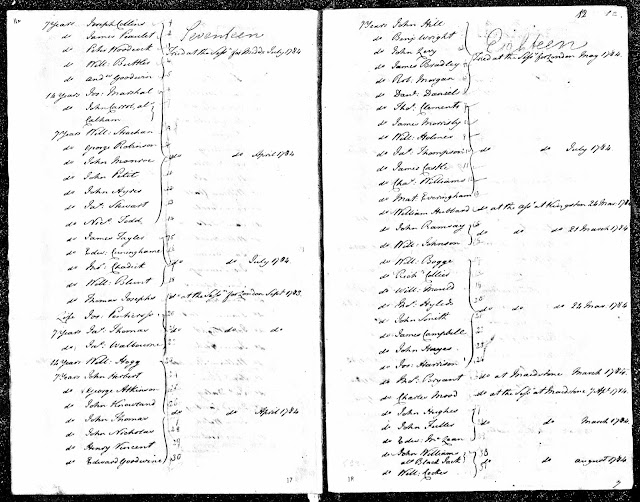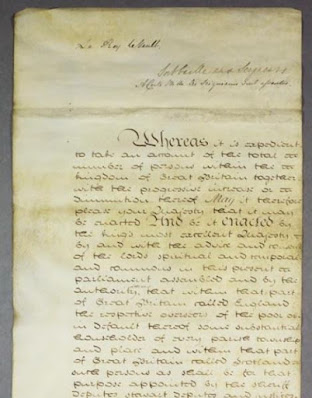No, an Indent is not a deep recess
So just what is a convict indent?
 |
| 1788 convict indent |
Indent actually is short for indenture, they are some of the most useful legal records for genealogists with a convict in the family. Most of the convict indents are held in the NSW Archives, but some are in Tasmanian Archives.
They are the official list and details of the convicts being transported aboard a particular ship. The amount of information recorded, particularly details of crimes and sentences, make them some of the most useful convict records. The information in them usually includes:
Name,
Where born,
Age,
Trial date and place,
Crime
Sentence,
Vessel,
Sometimes port of departure and arrival
Physical description of the convict
Some include information about tickets of leave, certificates of freedom or pardons, or whom the convict was assigned to.
 |
| 1789 Convict Indent |
If you cannot find a Convict Indent for someone, look for a Certificate of Freedom. These have similar information, and were widely used.
 |
| 1834 Certificate of Freedom |
 How to quickly search Ancestry for a Convict.
How to quickly search Ancestry for a Convict.
Did you know that the convict records on Ancestry can all be searched at once? Simply go to the Convict Collection page, and put in the details you know there.If that does not work, try going to the <search>, <Card Catelogue> page, then under Keyword put Convict. this will bring up all the expanded list of records in the convict collection individually. Start by searching Convict Indents and then Ship Muster Rolls to see if you can find the person you are after. You may have to go through each one separately until you find the person you want!
Note: this method allows you to put a bit more information about the person in the the search fields to help find them.


Comments
Post a Comment
Thank you for your comment on my Blog. I love to get feedback and information to share from my readers.
To keep up to date simply follow me on facebook or subscribe using the button at the top of the blog page.
Barb